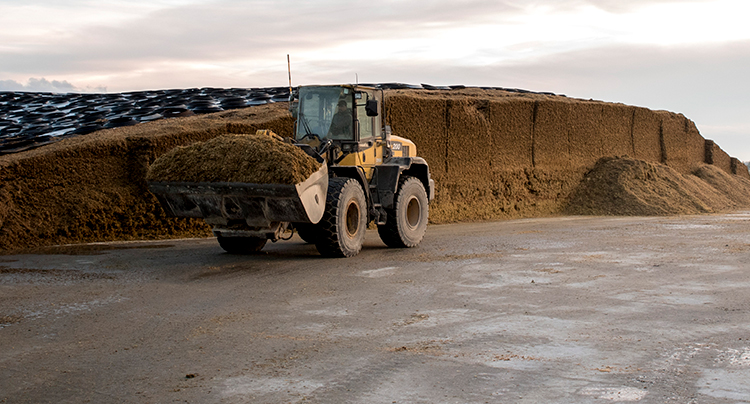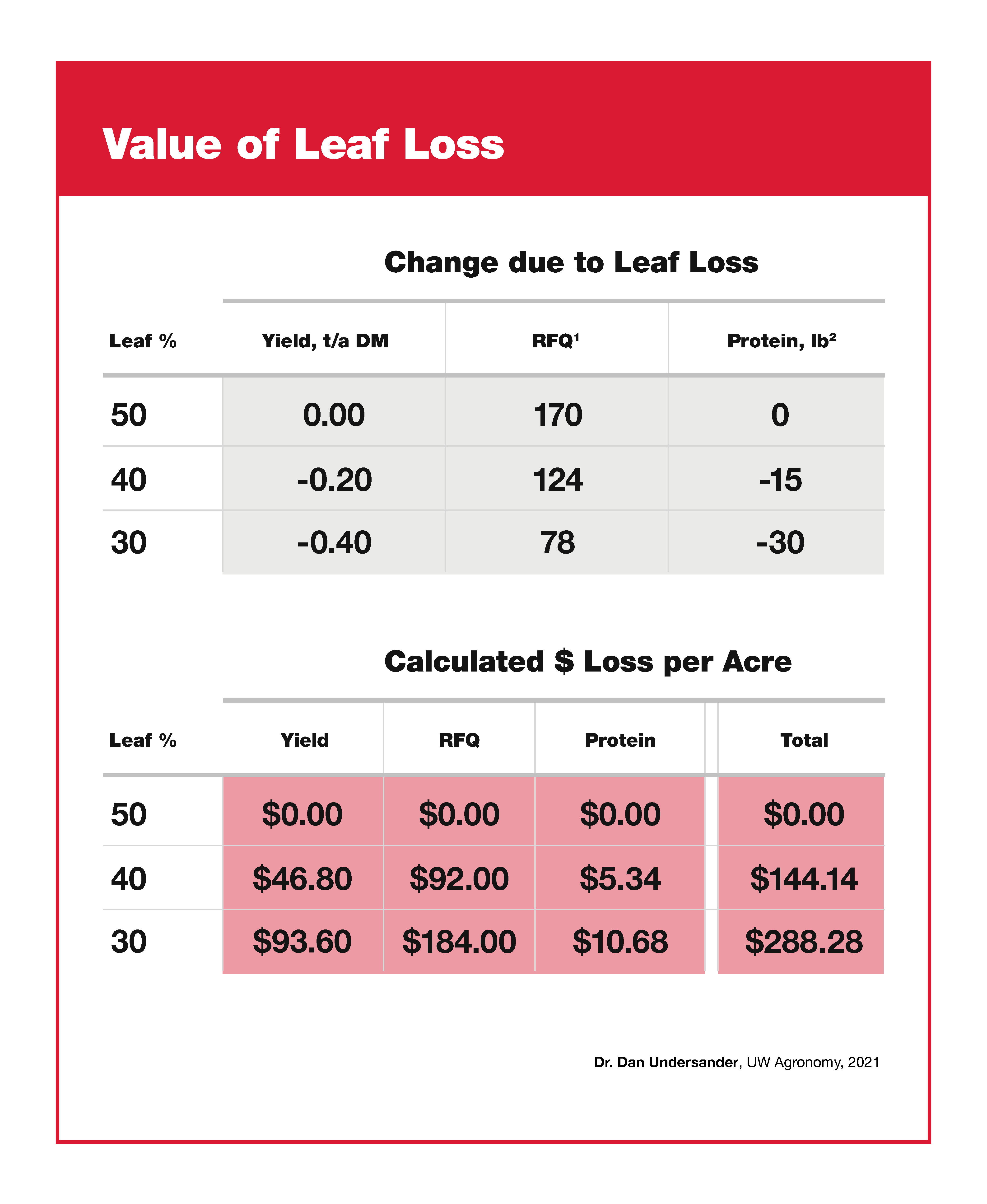Most farms, no matter their geographic location, experienced some sort of irregular or maybe even extreme weather conditions in 2021. As a result, it’s likely the quality of dairy feed and forages saw an impact, causing dairy producers to lean on their nutritionists to help build a balanced ration that still provides adequate energy, protein and fiber to maintain milk components and production. This has prompted the question: What should dairy producers know going into the 2022 growing season that will set their feed and forages up for success?
1. Focus on preserving forage leavesTaking extra care and caution to preserve haylage leaves when harvesting can help dairy producers see a potential increase in quality and yield. Knocking off even 10% of the leaves can lead to a 20-point loss in relative forage quality (RFQ) and a 5% loss in yield, which ultimately leads to lost dollars (see table). To avoid leaf loss and protect their bottom line, it’s important to:
• Handle alfalfa when it is wet. When there is more moisture on the plant, leaves and petioles are more resilient.
• Use a wide swath with no conditioner or an open conditioner. This allows sunlight to penetrate the swath, encouraging continued photosynthesis. The plant will continue to make sugars while drawing moisture up the stem, drying the crop more evenly.
• Adjust equipment to speeds that support continuous movement of the crop so it doesn’t rip the swath apart.
2. Adjust equipment to minimize dirt contamination
Proper equipment settings are a crucial step to minimize dirt in the final product, improving the overall quality of the forage. Ideal equipment settings for haylage harvest include:
• For mowers, the cutter bar should be set at 3 inches for alfalfa. For disk mowers, consider changing to a flatter profile knife to reduce vacuuming of dirt into the swath in lighter, later season cuttings.
• For tedders and rakes other than a wheel rake, the tines shouldn’t touch the ground. Set them as high as possible without leaving streaks.
• Mergers and choppers should be set high enough to pick up the maximum forage amount and minimize ground scraping.
3. Harvest corn at a higher moisture content for silage
As a corn plant dries down, the digestibility of the fiber (NDFd) decreases along with it, which means lost energy from the forage. Research has demonstrated this is a true loss of digestible material, not dilution by starch.2 Additionally, drier kernels tend to have lower starch digestibility and take longer for that digestibility to increase after ensiling. Therefore, it is important to harvest at an average of 65-67% whole-plant moisture to minimize digestibility loss.
4. Plant hybrids that balance kernel maturity and plant dry-down
While it’s important for a plant to live long enough to fill the ear, it is imperative for the plant to dry down in sync with the ear. Plants that stay green longer tend to dry down well past the optimum kernel moisture, leading to a kernel that is too dry and has a lowered starch digestibility. Planting hybrids that balance kernel maturity and plant dry-down can help preserve starch digestibility.
To learn more, talk with a Purina dairy feed representative or visit purinamills.com/dairy-feed.
References:
1 Table source: Dr. Dan Undersander, University of Wisconsin, Madison, Department of Agronomy, 2021
2 Owens, F. (2008). Corn Silage – Facts, Fantasies, and the Future. Florida Ruminant Nutrition Symposium. Gainesville, FL. Page 9, Figure 8.


